
During the summer of 1939, when it became clear that Poland would not yield to Hitler's demands, the blueprint for the Invasion of Poland, known as Fall Weiss (Case White), was devised. It proposed two simultaneous offensives. The first in the north, out of Pomerania and East Prussia, aimed to secure the Polish Corridor before turning southeast. The second, from the south, was aimed between Łódź and Kraków, intending to link up with the northern offensive near Warsaw. This strategy hinged on swift victory to pre-empt any response from the Western Allies, as two-thirds of Germany's forces were allocated to the Polish campaign, leaving Germany's western border lightly defended. German mobilization occurred primarily under the guise of drills throughout August, with preparations completed by the evening of August 25th, ready for the offensive to begin the next day. When Hitler delayed the invasion at short notice late on the 25th until the 1st September, some units didn't receive the notification in time, resulting in shots being fired in some places before the troops could be stood down. These instances served as an unmistakable sign to Poland of Hitler's intent to invade. The Polish defensive strategy was designed to hold the Germans along the border for as long as possible. This would allow them time to add strength in depth as their reserves were mobilized, while also waiting for the French counterattack against Germany, which had been promised within fifteen days of any assault on Poland. Time was one thing the Poles didn't have, and the disposition of their forces played straight into the hands of the Germans who were ideally positioned to exploit the double envelopment tactics central to Blitzkrieg doctrine, thereby cutting the Polish Army on the border into pieces to be defeated easily.
September 1939
1st September 1939
At 4:45am, Fall Weiss (Case White), the German Invasion of Poland begins and 2 minutes later at 4:47am the opening shots of World War 2 are fired by the German Battleship Schleswig-Holstein which had taken up a position in Danzig bay opposite the Polish fort at Westerplatte. She opened up with a full broadside by her 11inch guns at point blank range against the fort. German marines then attacked the polish outposts, but were bloodily repulsed. At 7:40am the Schleswig-Holstein once again opened a barrage against the fort for about an hour, before a second attack by the marines was launched around 8:35am, which was also repulsed by the Poles. Simultaneously, the Luftwaffe, with 2,300 aircraft launched heavy attacks on Polish airfields, communications and assembly areas. Although the poles had dispersed their Airforce, a large number of aircraft are destroyed on the ground, enabling the Luftwaffe to gain control of the sky's and by 6am Warsaw had been struck in the first of a number of raids as the Luftwaffe attacked military and civilian targets across the capital, along with the regional cities of Katowice, Krakow, Wielun, Tczew and Tunel, all of which were all hit heavily. With the Polish Airforce all but destroyed and Luftwaffe smashing up Polish rear areas, the Wehrmacht begins its own assault at 8am with 1.5 million solders, 9000 pieces of artillery and 2700 tanks crossing into Poland. The initial phase would be known as the 'Battle of the Border' from the polish side and saw Army Group North's 4th Army and Guderian's XIX Panzer Corps (3rd Panzer, 2nd and 20th Motorised Divisions), attack directly across the Polish Corridor with the aim of capturing Danzig and linking up with the 3rd Army in East Prussia, which was itself to push southwards into the rear of the Polish western defences behind Warsaw. Meanwhile the main thrust against Poland would come from Army Group South with the 8th Army attacking towards Lodz. 10th Army, which included the bulk of the German mobile formation's (two Panzer, three light and two Motorised Divisions) was to punch through polish forces around Katowice and race toward Warsaw. The 14th Army which was located further south in Moravia and Slovakia would attack in the direction of Krakow , with a Slovak force protecting its flank along the Slovakian border with Poland. 3rd Army's XXI Corps, commanded by Gen. von Falkenhorst, launches an assault with the 21st and 218th Infantry Divisions to the east of Graudenz, in the area of Lasin and Dąbrówka Królewska. The assault is held up by the Polish Pomorze Army's 16th Infantry Division on the left, but the 4th Infantry Division on the right is pushed back behind the river Osa, enabling a German bridgehead to be established near Bielawki. In the evening, the 4th Infantry Division puts in a counterattack aimed at throwing the 218th Infantry Division back behind the Osa, but this is repulsed. The Nazi Party's puppet Head of State in the free City of Danzig, Albert Forster signs a law incorporating Danzig into the German Reich, whilst Hitler formalizes this by signing a decree annexing the City. The British and French governments, feverishly despatch telegrams between themselves, Rome, Berlin and Warsaw in the hope that Mussolini can arrange an international peace conference to stop the war. At the same time they agree the text of the message to be handed to Germany. This states that "Britain and France did not accept Germany's actions towards Poland and that if Germany did not suspend their actions and agree to promptly withdraw from Poland, then the UK would fulfil their obligations to Poland" The British Ambassador, Neville Henderson is finally allowed to see German Foreign Minister Von Ribbentrop at 9pm and hands over the message. Ribbentrop makes no response, but instead advises he will refer it to Adolf Hitler.
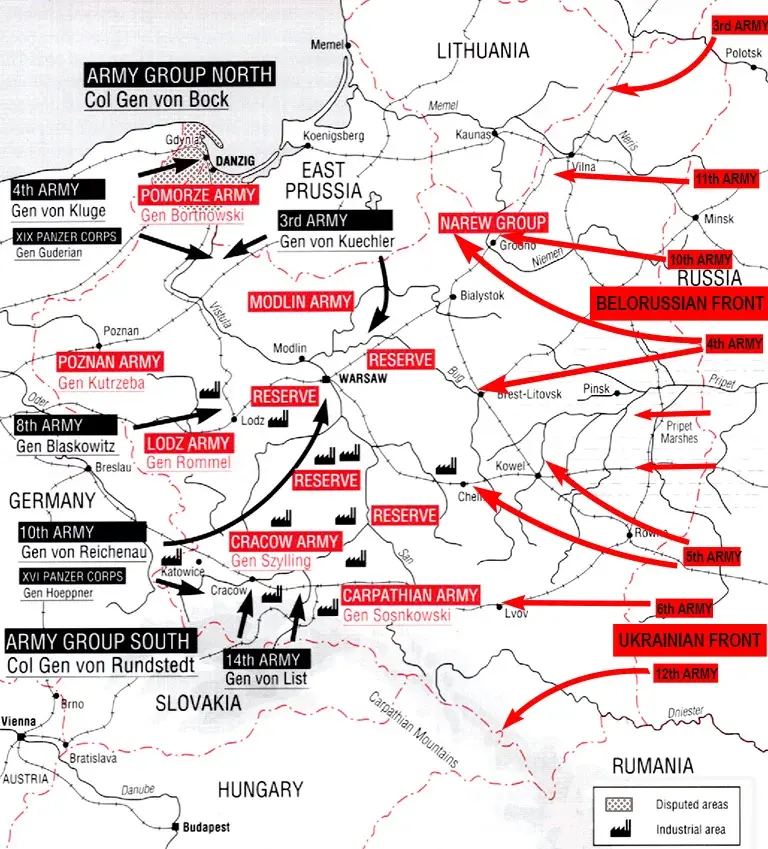
Germany's strategic plan for the invasion of Poland, including the secret Soviet invasion plans.
2nd September 1939
Between 6:05pm and 6:25pm the Westerplatte fort is attacked by the Luftwaffe, who 60 Ju-87 Stukas in two attack waves dropping a total of 27 tonnes of explosives. Leaving the fort surrounded on smoke, the raid destroys Guardhouse V, a number of polish mortars, along with the forts only radio and a large amount of its food supply. The key town of Wielun, having been devasted by Luftwaffe raids the previous day is captured by the German 10th Army , thus clearing it's the way through the polish border defences as it drives towards Warsaw. The Polish 10th Cavalry Brigade, under heavy pressure from the 2nd Panzer Division of the German 14th Army, is forced to withdraw from Jordanow south Crakow. Following an artillery barrage, XXI Corps renews its assault at 8 a.m. with the aim of further expanding its bridgehead across the river Osa. The attack falls heaviest on the 16th Infantry Division's sector, forcing it to retreat in disorder. By the afternoon, the Germans have broken the forward defence lines and are attacking the 208th Reserve Infantry Regiment, which shows signs of panic. To relieve pressure, the 4th Infantry Division launches a counterattack at 8 p.m. towards Melno with the aim of restoring the defensive line along the river Osa. The assault initially caused some surprise to the Germans, leading them to abandon Annowo, Gruto, and Nicwald before stabilizing the front line. Poland again calls for help from Britain and France under the terms of the mutual assistance pact signed on the 25th August. The French Ambassador meets von Ribbentrop at 10am to press for a German response to the message delivered by the British Ambassador the previous evening, but again receives no indication as to whether Germany will comply. At 12:30pm, France sends an additional message to Germany to withdraw its troops from Poland. Mussolini offers to host a conference to resolve the Danzig question, but the French and British agree that this should be conditional on a German withdrawal from Poland first. At 5pm, having still not having received any response to their approaches, the British and French begin to discuss giving Hitler a time limit to respond, and late into the evening following many telephone calls and telegrams they agree to this approach.
3rd September 1939
With the German 4th Army having crossed the Vistula in strength further to the south of Graudenz, the Pomorze Army is threatened with encirclement. Polish forces destroy any remaining bridges across the Vistula and pull back towards the southeast, setting up a defence line behind the Drwęca River. The Polish Modlin Army, having been attacked by the German 3rd Army for 3 days in its positions along the northern border with East Prussia is defeated around Mlawa and begins a withdrawal towards the Narew and Bug rivers and the fortress of Modlin, northwest of Warsaw. Britain issues a final ultimatum to Germany at 9am, giving the Germans until 11am to agree to withdraw their troops from Poland. Just after the deadline a German response is received in the form of an 11 page document, which confirms their refusal to withdraw from Poland. At 11:15am Prime Minister, Neville Chamberlain announces that "no such undertaking has been received" from Germany to withdraw their forces and he therefore declares that "Britain is now at war with Germany". The declaration also commits Australia and New Zealand to the war, having been agreed in advance with their governments. Similarly France also declares war on Germany at 5pm following the expiry of its own ultimatum.
Neville Chamberlain
Prime Minister of the United Kingdom
Radio Broadcast to the British People on the 3rd September 1939
"I am speaking to you from the cabinet room at 10 Downing Street. This morning the British ambassador in Berlin handed the German government a final note stating that unless we heard from them by 11 o'clock that they were prepared at once to withdraw their troops from Poland, a state of war would exist between us. I have to tell you now that no such undertaking has been received, and that consequently this country is at war with Germany."
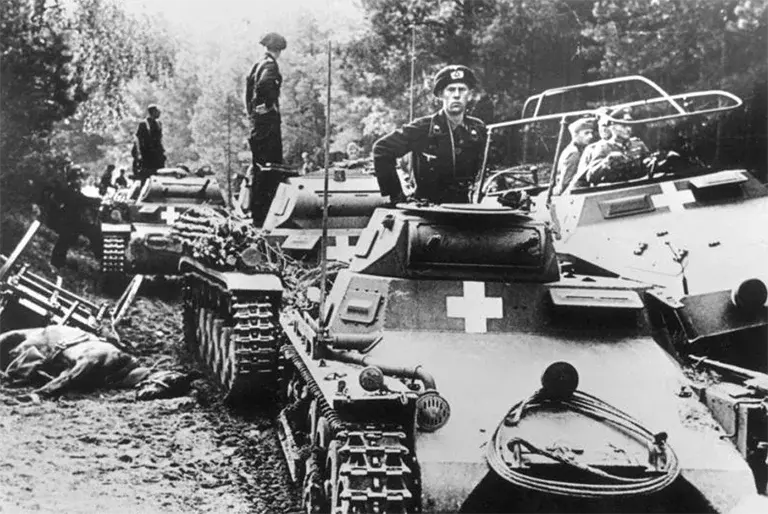
A German Panzer Column near the Brda River on the 3rd September 1939.
4th September 1939
Units of the German 21st Infantry Division (3rd Army) complete the capture of Graudenz. The German battleship Schleswig-Holstein, supported by the minesweeper Von der Gronen and torpedo boat T196 bombard the Westerplatte forts 'Wal' outpost. There are no Polish casualties as the outpost had already been abandoned.
5th September 1939
A meeting of officers is held at the Westerplatte fort to discuss a surrender to the Germans. Major Sucharski, the forts commander affirms his orders only required them on to hold out for 12 hours, whilst they have so far resisted for 5 days. He suggests that due to the large number of wounded who need urgent medical attention, and dwindling supplies of food, water and ammunition they should surrender. His deputy, Franciszek Dabrowski, is opposed and convinces the other officers that they should hold out longer.
6th September 1939
The Polish garrison in the Westerplatte repel several more German attacks against the fort, inflicting heavy losses. Major Sucharski again suggests that they should surrender as many of the wounded are now suffering from gangrene for which they have no means of treatment. Again his deputy, Dabrowski, opposes a surrender believing that every day they hold out assists Polands defence.
7th September 1939
At 04:30 the Germans begin an intensive barrage against the Westerplatte Fort lasting until 07:00 during which the bombardment is supported by the battleship Schleswig-Holstein. During this the Germans succeed in destroying guardhouse II and severely damaging guardhouse I and IV. By 09:45 Major Sucharski, this time with the agreement of his deputy, Franciszek Dabrowski agree to surrender and hoist a white flag above the fort. During the weeks siege, the small Polish garrison suffers 15 killed and approximately 40 wounded, whilst German casualties were heavy in comparison with 50 killed and 150 wounded.
8th September 1939
The XVI Panzer Corps of the German 10th Army (Von Reichenau) completes the encirclement of Warsaw reaching the city's southwestern suburbs and linking up with the I Corps of the 3rd Army (Von Kuechler), which had secured the eastern bank of the Vistula from the north. After penetrating into the Wola district, the XVI Panzer Corps launches an assault around 5pm against the Ochota district, using the 4th Panzer Division, but this is repulsed with heavy German tank losses. The Luftwaffe, using 140 Ju-87 Stukas, launches an air assault on known Polish army positions in both the eastern and western suburbs of Warsaw. Units of the German I Corps, part of Kluge's 4th Army of Army Group North, commanded by General Leonhard Kaupisch, begin their assault towards the isolated port city of Gdynia.
9th September 1939
The 4th Panzer Division, reinforced with artillery and motorized infantry, launches another assault against the Ochota district of Warsaw in an attempt to break into the city, but is again unable to breach the defensive barricades and well-placed Polish anti-tank guns, suffering further heavy casualties.
10th September 1939
Despite determined resistance from Polish forces near Puck and Wejherowo to the north of Gdynia, the German 207th Infantry Division breaches the outer defence lines, pushing the them back towards Gdynia. The Polish commander of the city's defences, Colonel Dąbek, realizing that a protracted fight in the city would cause heavy civilian casualties, begins preparations to withdraw his forces north of the city's port facilities and anchor his defences around the heavily forested Kępa Oksywska and use the port's ship canal to protect his southern flank, with the coast to his east.
12th September 1939
Polish forces are forced out of Mechlinkin, north of Gdynia, and are compelled to retreat southwards along the coast towards the city. Along with the Germans breaking into the city proper, Dąbek issues the order for all units to withdraw to the Kępa Oksywska position.
13th September 1939
The Luftwaffe bombs Warsaw with level and dive bombers causing widespread fires. The Polish Submarine 'Wilk' receives orders to break out of the Baltic Sea and attempt the risky journey to reach the United Kingdom.
14th September 1939
The Germans capture Gdynia as the Polish forces, numbering approximately 9,000 men, complete their withdrawal from the city to the defensive position at Kępa Oksywska. The Polish submarine Orzeł docks in Tallinn, Estonia, seeking assistance for its commanding officer, Lieutenant-Commander Henryk Kłoczkowski, who was unwell, and is interned.
16th September 1939
Tightening the noose around Polish troops engaged in the Bzura counter-offensive and effectively cutting them off from Warsaw to the east, the German 10th Army succeeds in capturing Kutno, a vital transport and communication hub near the Bzura River, with critical road and rail links to the capital.
General Mieczysław Smorawiński
Polish Army
17th September 1939
"We will fight to the last man, to the last bullet, for our freedom, for our independence."
17th September 1939
With Poland already significantly weakened by the German invasion, the Soviet Union executes the secret clauses of the Ribbentrop-Molotov Pact, signed the previous month, which agreed the division of Poland between Nazi Germany and the Soviet Union, and begin an invasion from the east. Declaring that Poland no longer exists as an independent state and under the pretext of protecting the Byelorussian and Ukrainian populations living in Poland, two Soviet Fronts, Byelorussian in the north and the Ukrainian in the south, cross the frontier into Poland. The Soviet forces, numbering around 600,000 troops, 4,736 tanks, and 3,300 aircraft, encounter little resistance, as the Polish Army in the east consists mainly of border guards with very liitle artillery or air support. At Brest-Litovsk, the under-equipped and significantly outnumbered Polish 9th Infantry Division, along with the fortress’s garrison units under General Konstanty Plisowski, continue to offer determined resistance against General Heinz Guderian’s XIX Army Corps, primarily comprising the 10th Panzer and 20th Motorised Infantry Divisions. Following preliminary attacks on the city the previous day, the Germans launch a combined assault from multiple directions, aiming directly at the fortress. By the afternoon, with concentrated artillery and infantry assaults, they succeed in capturing the fortress complex along with the remainder of the city. The Polish government, headed by President Ignacy Moscicki with the commander-in-chief Edward Rydz-Smigly leaves Poland, crossing the border that night into neutral Romania with the intention to ultimately reaching France to setup a Government in Exile. However, under pressure from Germany and the USSR, they were interned by Romania.
18th September 1939
Following his internment the previous evening President Moscicki announces his plan to transfer power and appoint Wladyslaw Raczkiewicz as head of the polish government in exile who was on his way to Paris. Carrying with them two replica German Enigma machines, members of the Polish Cipher Bureau leave Poland enroute for France. The Polish submarine Orzeł makes a daring escape from internment in Tallinn, Estonia, navigating without charts or its captain, Lieutenant-Commander Henryk Kłoczkowski, who, due to illness, was left behind. Lieutenant Jan Grudziński, the former chief officer, took command and led the courageous journey to safety in Britain.
19th September 1939
Under sustained German pressure since the 14th, with few supplies left, and having suffered 2,000 killed, the remaining Polish forces surrounded at Kępa Oksywska in Gdynia surrender. Hitler arrives at the Kasino Hotel in the Sopot area of Danzig following his triumphant entry into the city that morning. Later in the afternoon he gives a speech at the Artushof proclaiming that Germany "through me, embraces and admits you (Danzig) into our eternal community, and which never again shall release you." Red Army forces of the Ukrainian Front reach Lwów on its eastern side and complete a link up with German troops already stationed to the west of the city. Later in the day, Russian envoys begin negotiations with defending Poles, but they refuse to surrender. Mobile troops of the Soviet Byelorussian Fronts 11th Army, comprising at least two cavalry divisions, three armoured brigades, and numerous infantry battalions, overwhelm the weak Polish forces (approximately 10 infantry battalions) defending Wilno to capture the city. Lavrenti Beria, head of the Soviet NKVD, establishes the Directorate for Prisoners of War to manage approximately 240,000 Polish POWs captured during the Soviet invasion of Poland. Detention camps were set up across the USSR to hold these prisoners, with around 37,000 being used as forced labour. The Soviet Union, not being a signatory to the Geneva Convention, was not bound by its rules, and many polish POW's died due to the poor conditions.
Adolf Hitler
Chancellor and Führer of Germany
19th September 1939
"Not only you experience this moment with deepest emotion, nay, the entire German nation experiences it with you, and I, too, am aware of the greatness of the hour when I, for the first time, tread on the soil which German settlers occupied five centuries ago and which for five centuries was German, and which henceforth you may rest assured "will remain German...."
20th September 1939
German forces in eastern Poland begin withdrawing to the demarcation line agreed upon in the Ribbentrop–Molotov Pact. The Red Army advances behind them to occupy the eastern territories, in accordance with the agreement’s secret protocol. The German XVIII Corps begins to evacuate its positions in front of Lwów , withdrawing back toward the Vistula-San river as agreed in the Ribbentrop-Molotov Pact and leaving the capture of the city to the Red Army. The Polish submarine 'Wilk' successfully reaches Rosyth Naval Base in Scotland following a dangerous journey through the Baltic and North Sea. Wilk was the first Polish naval vessel to arrive in Britain, symbolising the continuation of Polish resistance, with it and other ships later being integrated into British naval operations against the Kriegsmarine.
21st September 1939
With Red Army units having now taken over German positions to the West of Lwów and preparing to assault the City, the Poles initiate surrender talks, seeing that a further defence of the city is hopeless and would only cause unnecessary civilian casualties and destruction. Following his visit to Danzig, Hitler inspects the Westerplatte where for a week, Polish troops had stubbornly resisted German efforts to capture the fortress.
22nd September 1939
German and Soviet forces conduct a victory parade through Brest-Litovsk at 16:00. It's unusual, in that the parade is conducted by troops of Guderian's XIX Corps as they withdraw from the city and back across to the demarcation line to the western bank of the bug river, being saluted by soviet troops from the 29th Tank Brigade. Following negotiations, German troops complete their evacuation from the Lwów area withdrawing behind the demarcation line. Lwów surrenders to the Red Army, with the terms allowing the 1,500 officers to leave Poland for another country and all other ranks (approximatley 8,500) to demobilise and return home. Once Soviet troops move in and occupy the city they break the surrender terms and began to arrest officers and men alike. These are then shipped to prisons in Russia, with the officers being executed by the NKVD the following spring, with large numbers being buried in the Katyn forest. Small groups of Polish troops begin crossing into Romania and Hungary, both of which were still neutral countries, with the aim of making their way to France to continue the fight against Germany. Although Romania, under German pressure, interned many of these Polish personnel, it remained relatively friendly toward the Poles. Along with Hungary, provided aid to Polish soldiers and civilian refugees, facilitating their transit through both countries to reach other friendly nations where they could continue their resistance efforts.
23rd September 1939
Elements of the Red Army's 2nd Tank Brigade clash with the Polish 101st Uhlan Regiment, commanded by Major Żukowski, near Kodziowce (north-eastern Poland) and are forced to withdraw losing 7 tanks and armoured cars and 25 killed or wounded according to soviet figures.
24th September 1939
The NKVD execute 42 staff and patients at a Polish military hospital in the village of Grabowiec. German Einsatzgruppe IV, under the command of SS-Brigadeführer Lothar Beute, executes approximately 800 Polish intellectuals, political leaders, and members of the Polish elite as part of a campaign to eliminate potential resistance to German occupation. The atrocity is committed near Bydgoszcz, a site that became known as the 'Valley of Death' due to the numerous killings carried out during September and October 1939. The Soviet Union as per the Secret 'Spheres of interest' Clause agreed in the Ribbentrop-Molotov pact, demands of the Estonian Foreign Minister in Moscow that Estonia sign a treaty of 'mutual assistance', allowing for the Soviet Union to occupy key Estonian military bases.
25th September 1939
At 0800, in coordination with the German Army heavily shelling Warsaw, the Luftwaffe begins a massive bombing attack against the city, launching 1,150 sorties and dropping 500 tons of high explosive and 72 tons of incendiary bombs over the course of the day. Nicknamed 'Black Monday' the attack badly damages the centre of Warsaw, bursting water mains and knock out electricity. However, because of the fires obscuring the view of later waves of aircraft, the Luftwaffe also manages to inadvertently drops some of its bombs onto the positions held by German infantry units that have penetrated into the northwest of the city, inflicting heavy casualties. Polish casualties in Warsaw since the start of the war now stand at approximately 18,000 civilians and 23,000 military dead and wounded.
26th September 1939
Germans forces encircling Warsaw launch a coordinated attack to break in and capture the city. Assaulting from both the Western and Eastern sides simultaneously, with 5 and 4 divisions respectively, and supported by 150 artillery batteries, they succeed in capturing the crucial forts of Mokotów, Dąbrowski, and Czerniaków, significantly weakening Warsaw's defensive capabilities.
27th September 1939
At 12pm a cease fire is agreed between German and Polish forces in Warsaw and at 2pm the city officially surrenders to the Wehrmacht. During the siege 18,000 civilians were killed and approximately 50% of the city is heavily damaged.
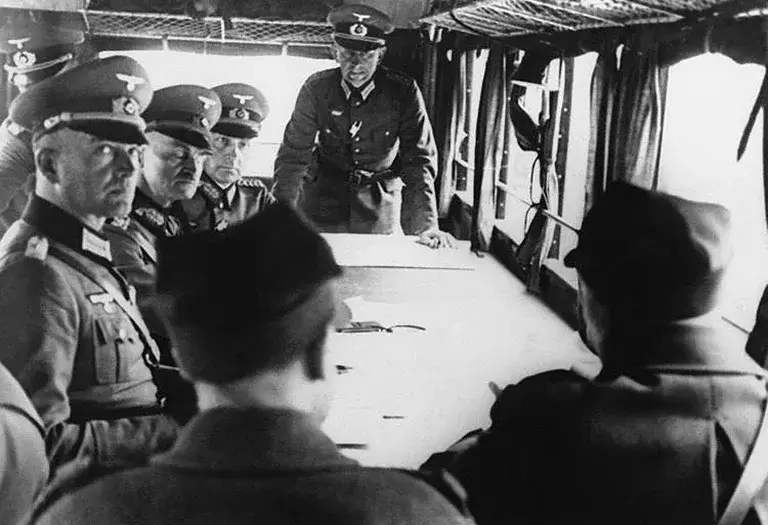
German and Polish military officials negotiate the formal surrender of Warsaw to German forces.
28th September 1939
Troops of the Polish Border Defence Corps (KOP) engage elements of the Red Army's 52nd Rifle Division defending Szack in Eastern Poland, destroying several T-26 tanks and routing the defending infantry force, briefly liberating the town. However, they withdrew later in the day as Red Army reinforcements arrive. German and Soviet Foreign Ministers meet in Moscow and agree to the modification of the secret 'spheres of influence' protocol contained in the Ribbentrop-Molotov Non-Aggression Pact, negotiated in August. Known as the 'German-Soviet Treaty of Friendship, Cooperation and Demarcation', it was agreed that Lithuania would move into the Soviet sphere and would retain the Belorussian and Ukrainian parts of Poland. In exchange, Germany was given the whole of ethnic Poland and would also be allocated all land on the left bank of the River Scheschupe from Lithuania. With the build-up of Soviet ground forces along the Estonian border becoming increasingly more apparent and with Soviet Air and Naval forces provocatively flying over and sailing through their territory. The Estonian government seeing no other choice, signs the 'mutual assistance' treaty, thereby allowing Soviet naval, air and army bases to be established across the country.
29th September 1939
As part of the conditions of Warsaw's surrender, the 140,000 soldiers of its garrison begin to leave the city and head towards German lines to be made prisoners of war. With the surrender of Warsaw, General Wiktor Thommée, in command of the Polish forces defending the Modlin Fortress and the surrounding area northwest of Warwsaw, agrees to surrender to the Germans. These forces are the remnants of the Modlin Army, which were encircled on the 13th of September and number approximately 35,000 officers and men.
30th September 1939
Polish President Moscicki, officially relinquishes office to Wladyslaw Raczkiewicz in Paris, who immediately takes the constitutional oaths at the Polish Embassy, becoming President of the Republic of Poland and establishing the government in exile. Raczkiewicz then appoints General Wladyslaw Sikorski as his Prime Minister.
October 1939
1st October 1939
German forces begin to enter and occupy Warsaw. The Polish Cipher Bureau arrives in Paris to continue their work in conjunction with French and British intelligence to break the German Enigma code.
2nd October 1939
The Polish Independent Operational Group "Polesie," commanded by General Kleeberg, launches a series of attacks against German forces in and around the town of Kock, approximately 120km southeast of Warsaw. Despite being outnumbered and facing supply shortages, the Polish forces, organized around the remnants of the 60th Polish Infantry Division "Kobryń," the Podlaska Cavalry Brigade, and several other improvised groups, managed to achieve a tactical victory against the German 13th Motorized Division, attached to the XIV Motorized Corps, 10th Army, Army Group South, forcing the division to regroup. Both sides suffered several hundred casualties. Following a month-long siege and with dwindling supplies and morale, 3,000 Polish troops of the Hel Peninsula garrison, led by Rear Admiral Włodzimierz Steyer, surrender to German forces. The German Department of Justice, within the General Government, begin using Pawiak Prison in Warsaw. In March 1940, the prison was transferred to the Warsaw District’s SIPO (Sicherheitspolizei) and SD (Sicherheitsdienst) security agencies, which implemented a brutal regime of torture and execution for the prisoners incarcerated there. This continued until the prison was destroyed by German forces on August 21, 1944. During this time, approximately 100,000 prisoners passed through its gates, with 37,000 executed and 60,000 sent to concentration camps.
3rd October 1939
Lithuanian Foreign Minister Juozas Urbsys, arrives in Moscow ostensibly to resolve the status of the Vilnius Region with the Soviet Union, but during the meeting Stalin informs Urbsys about the secret protocols in the amended Ribbentrop-Molotov pact and demands that Lithuania sign a treaty of 'mutual assistance' similar to Estonia and Latvia, allowing Soviet forces to be based in the country, although two additional elements were included. The first, was to cede territory west of the Scheschupe River to Germany and the second would allocate a portion of the Vilnius Region including Lithuania's historical capital of Vilnius back to Lithuania from Poland. Urbsys, shocked by the demands postpones any answer and returns to Lithuania to consult with the government.
5th October 1939
Adolf Hitler takes the salutes of the German Army during the 'Siegesparade' (Parade of Victory) through Warsaw. Latvia having seen Estonia sign a 'mutual assistance' treaty with the Soviet Union and with no other options, sends its Foreign Minister Vilhelms Munters to Moscow to sign its own 'mutual assistance' Treaty with the Soviets allowing them to establish military bases in Latvia at Libau and Windau.
6th October 1939
In a speech to the Reichstag, Hitler ask's why Britain and France should continue the fight against Germany? "For restoration of Poland? ...Poland of the Versailles Treaty will never rise again. This is guaranteed by two of the largest States in the world. Final re-organization of this territory and the question of re-establishment of the Polish State are problems which will not be solved by a war in the West but exclusively by Russia on the one hand and Germany on the other."
7th October 1939
A Lithuanian delegation returns to Moscow with counter proposals for the 'mutual assistance' pact, but Stalin refuses them, although he does agree to reduce the Soviet garrison to 20,000. With the Soviet's wanting an immediate answer, the Lithuanian delegation stalls for time and returns home.
8th October 1939
Hitler signs a decree formally annexing parts of western Poland to Germany and officially establishing the new regions of Reichsgau Posen (renamed Reichsgau Wartheland in January 1940) and Reichsgau West Prussia. Smaller areas were incorporated into the existing Reichsgau East Prussia and Reichsgau Upper Silesia.
10th October 1939
A third Lithuanian delegation arrives on Moscow in an attempt to demand as much of Vilnius Region be transferred from Poland as possible before signing the 'mutual assistance' agreement, but they find Stalin inflexible. With little choice but to sign or face a soviet invasion, they sign the proposed treaty hoping to keep some degree of autonomy.
14th October 1939
Following its daring escape from internment in Estonia the previous month, the Polish submarine Orzeł safely arrives in Rosyth, Scotland, after navigating a perilous journey through the Baltic Sea and North Sea.
21st October 1939
As part of a broader Nazi campaign to Germanize the territories of western Poland recently annexed into the Reich, German authorities begin the mass deportation of Polish civilians from Posen (Poznań) and its surrounding areas. Forcibly loaded onto trains, these civilians were transported east to the future borders of the General Government (an area of Poland not annexed but under German control) and left to fend for themselves.
26th October 1939
The General Government is established in Poland under Hans Frank to administer those areas of Poland, not annexed into Reich. Its headquarters are at Wawel Castle in Krakow.
31st October 1939
Vyacheslav Molotov, the Soviet Foreign Minister, delivers a speech to the Supreme Soviet in Moscow, justifying the invasion of Eastern Poland on 17 September 1939 as a necessary step for the protection and security of the Soviet Union. He states, "One swift blow to Poland, first by the German Army and then by the Red Army, and nothing was left of this ugly offspring of the Versailles Treaty!" Molotov also expressed disdain for Britain and France, accusing them of aggression and attempting to push the Soviet Union into a war with Germany.
November 1939
1st November 1939
Danzig and the Polish Corridor, along with all territories that were forcibly transferred to Poland under the 1919 Versailles Treaty following World War 1, are officially restored to the German Reich.
3rd November 1939
The areas of Eastern Poland occupied by the Red Army are officially annexed by the Soviet Union, being split between the Belarusian and Ukrainian SSR's. The only area to avoid this fate is the Wilno area, which is transferred to Lithuania.
14th November 1939
The Polish government-in-exile in Paris, forms the Związek Walki Zbrojnej (ZWZ), or Union of Armed Struggle, to coordinate resistance activities in Poland against the Nazi and Soviet occupiers.


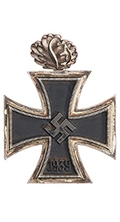
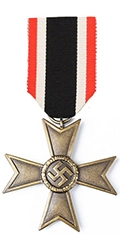
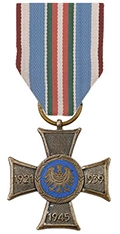
© Copyright 2025. World-War-2.org. All Rights Reserved.